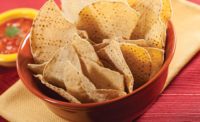The food industry is crowded. Snack and bakery product categories increasingly grow saturated. In the constant search to drive more business, snack producers and bakeries have dedicated resources to segments like gluten-free, allergen-free, clean-label and better-for-you. And while these niches (some bigger than others) still offer opportunities in terms of product dynamics, some are starting to hit plateaus.
To remain competitive, food businesses need to stay informed of emerging trends—as well as to those that are integrating into the mainstream, and how they are changing along the way. Operations must continually analyze existing and potential processes and equipment to determine how they can improve quality, food safety and throughput, while adding and refining technological advances to streamline logistics from ingredient sourcing through distribution. Packaging specialists need to enter the discussion early in the product-development process to align materials, messaging and end-user dynamics—including sustainability measures. And the ingredient supply chain must face ongoing scrutiny to ensure that suppliers deliver quality ingredients, consistently within specifications, while remaining efficient and cost-competitive—and meeting any specialized criteria like non-GMO, gluten-free or allergen-free. These are the nuts and bolts of any sound food business.
And then there’s innovation—the sparks that fire the cylinders, fueling the overall machine to challenge, and hopefully surpass, the competition.
Research and development combines key elements of sensory art and food science, and most companies have a set method of experimenting with new concepts. But flexing R&D models can often yield new, unexpected—and sometimes delightful—results.
In the 1850s, as the story goes, a customer at the Moon’s Lake House in Saratoga Springs, NY, decided the fried potatoes that the restaurant’s cook, George Crum, was serving were just too thick for his liking. After repeated attempts to appease this finicky customer, slicing the potatoes incrementally thinner before frying, Crum decided to throw all caution to the wind and—likely armed more with irritation than innovation—sliced the potatoes paper-thin, frying them to such a crispness that eating them with a fork would prove impossible, perhaps anticipating that he would truly offend his fastidious customer, chasing him back into the night. Unexpectedly, the customer loved the thin, ultra-crispy potatoes, subsequently dubbed “Saratoga Chips.” Word spread, and the item hit the regular menu, and the potato chip—as legend has it—was born.
Ruth Wakefield likewise had good fortune on her side one day in the 1930s, when she experimented with a new cookie concept at her Toll House Inn in Whitman, MA. Feeling inspiration, she chopped some semisweet chocolate bars into bits and added them to the dough, instead of the usual process of melting the chocolate first. The chunks remained intact, simply softening during baking, and the Toll House Chocolate Crunch Cookie changed the category forever. Her recipe proved wildly popular, and Andrew Nestlé eventually offered Wakefield a lifetime supply of chocolate—and one dollar—for the rights to use the Toll House name and print her cookie recipe on the packaging of his new chocolate chips. The rest is history.
This year’s Snack Producer of the Year, Unique Pretzel Bakery—this month’s cover story—likewise built a career on the basis of a fortuitous finding. Back in the 1930s, William P. Spannuth unintentionally allowed a batch of pretzel dough to proof a bit longer than usual, and when the pretzels baked in the oven, they split open, creating crevices and bubbles—and a uniquely satisfying crunch. He distributed the pretzels anyway, and his customers raved about the new creations, soon dubbed “Splits.” Fast forward to 2011, and the Spannuth family used a similar, carefully timed proofing and baking process to create the industry’s first hollow pretzel, dubbed “Shells,” in 2011. It’s now Unique Pretzel Bakery’s best-selling product.
The fortuitous sparks of innovation can bring new life to a category, build careers—and, sometimes, they make history.





